What happens when you throw 1,000 mountain nerds into Chamonix? I went to find out
Arc’teryx’s Alpine Academy is equal parts terrifying, beautiful and addictive
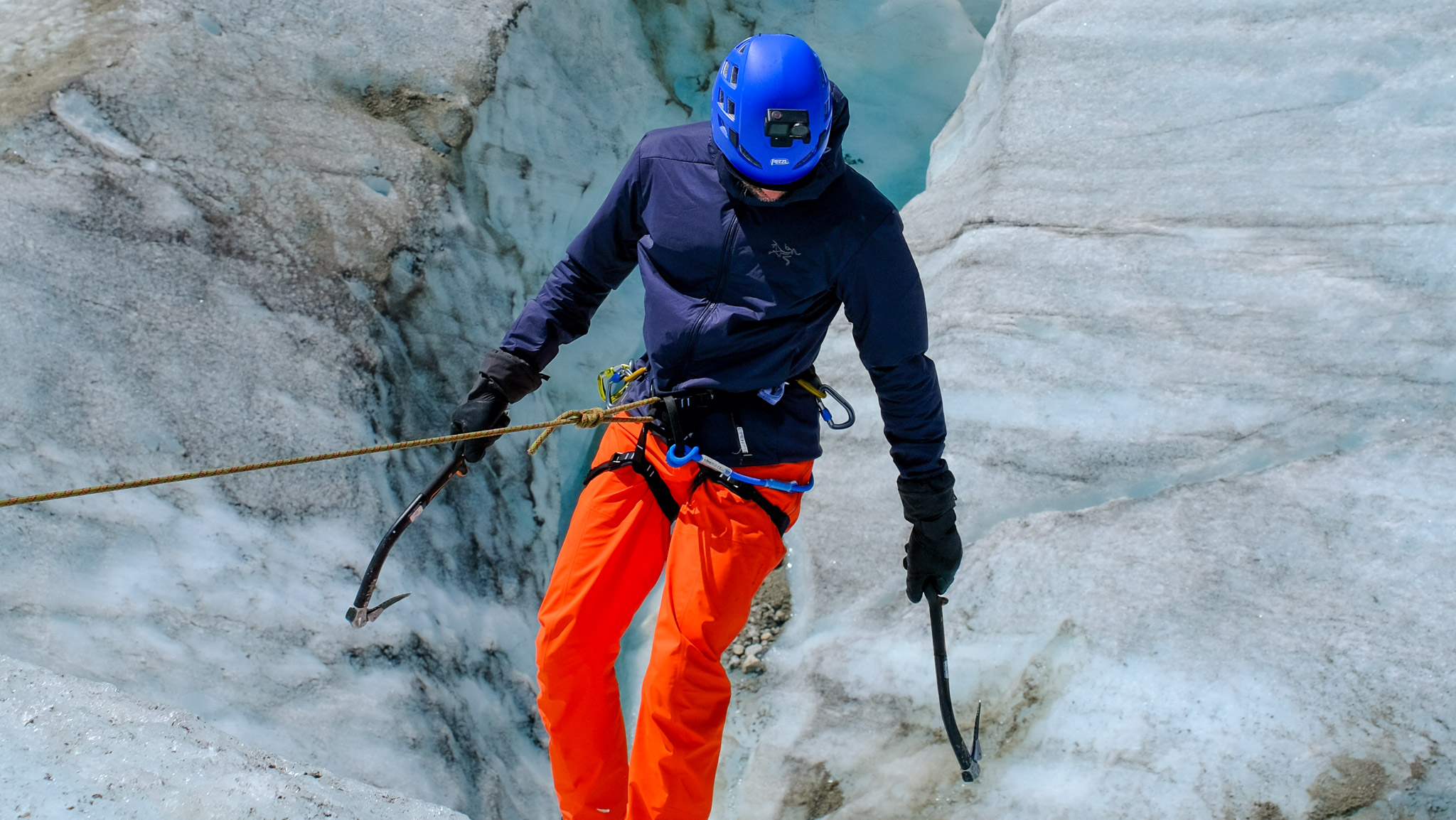

The tip of the ice axe refused to release from the wall, no matter how vigorously I tried to yank it out. It was likely my futile wriggling that dislodged the other axe from its anchor point, sending me into the void. The rope tightened, and I felt the harness bite into my waist. I was caught. Time to start the climb again.
I spent four sweltering days in Chamonix in July to attend the Arc’teryx Alpine Academy, the brand’s flagship global event celebrating all things mountaineering, trail running, and general mountain love.
It’s a fantastic gathering that draws mountain enthusiasts from across the globe for a week-long celebration in and around Chamonix, the birthplace of modern alpinism and home to other hugely popular events like UTMB.
The Academy has many layers. At its centre is Parc Couttet, where the main stage and brand stands are set up. It’s a free outdoor festival featuring live music, film screenings, panel talks, workshops, sun loungers, and food and drink stalls. It’s the beating heart of the Academy and completely open to the public, even if you haven’t signed up for any clinics.
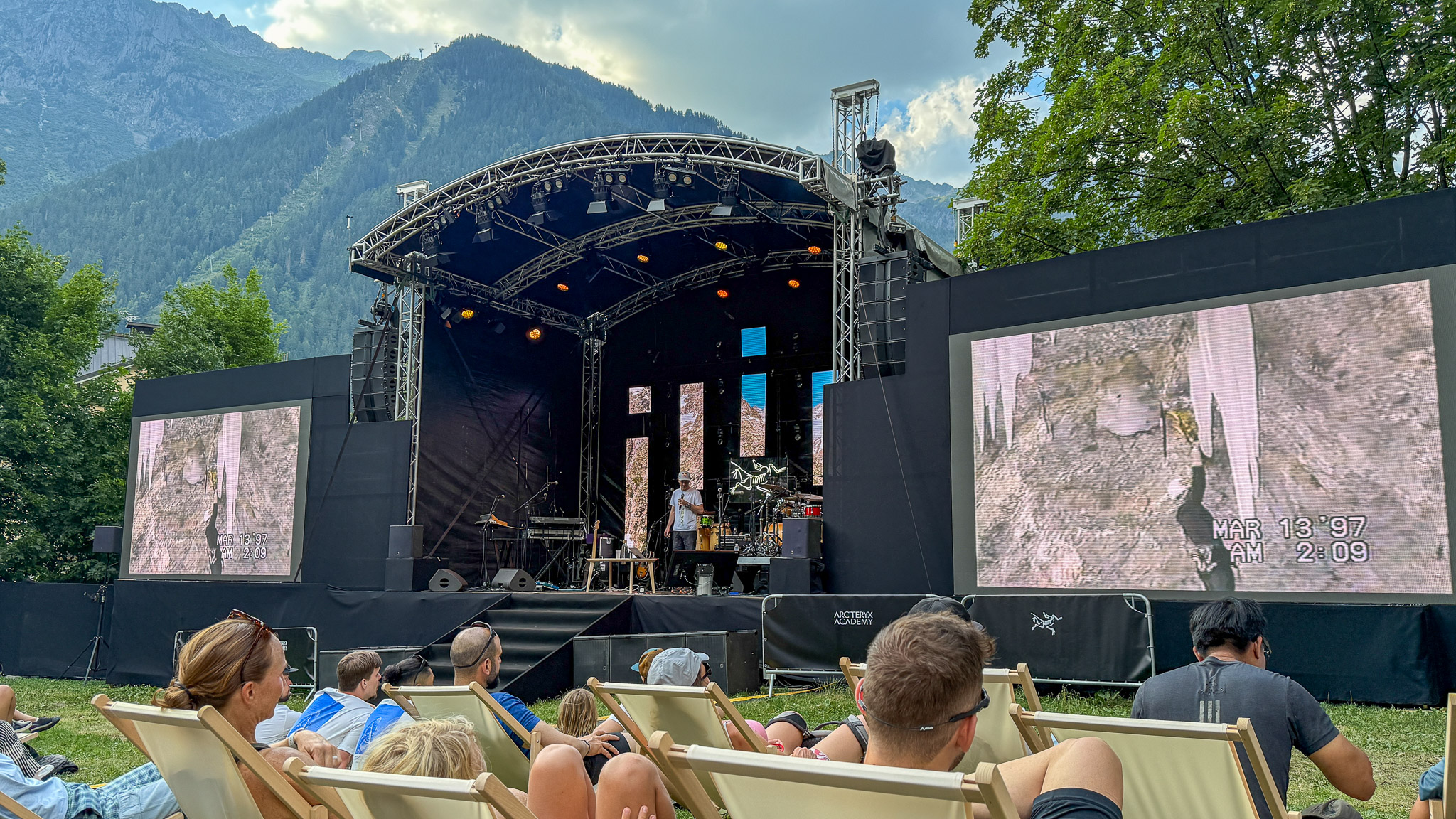
Within Parc Couttet, you’ll find a climbing wall, a reading corner stocked with books and magazines, and Arc’teryx’s ReBird booth, where you can get your gear repaired. There’s also the registration hub, where attendees can collect their goody bags.
Everyone is welcome at the festival, and many stumble upon it by chance. Chamonix ranks among the top ten most visited sites in one of the world’s most visited countries, so curiosity alone is enough to draw people into the park, regardless of whether they’ve heard of the Academy.
Despite the crowds, the whole experience feels busy but never overwhelming, which surprised me. I’m a bit of an introvert and typically prefer the quiet solitude of the mountains, but you won’t find much of that in Chamonix. The village is always alive, and Parc Couttet is constantly humming with activity on the main stage.
Get all the latest news, reviews, deals and buying guides on gorgeous tech, home and active products from the T3 experts
Talks, films, and glacial realities
My favourite talk was from Arc’teryx ambassador Will Gadd, whom I found to be equal parts fascinating and unhinged. He’s living the life many of us dream about, filled with climbing, paragliding, whitewater rafting, and mountain biking.
At the same time, it’s clear that Gadd sees life differently from most of us. He’s miles removed from the world of 9-to-5 warriors pretending to be mountaineers, like myself. His climbing masterclass was both wildly inspirational and undeniably bonkers (he mentioned seriously considering getting an IV drip inserted so he could ice climb for 24 hours straight).
Alongside the talks, the Academy also hosts numerous film premieres. Even better, many of the filmmakers and stars are on hand to introduce their work and take questions, giving attendees access to some of the most creative minds in the outdoor industry.
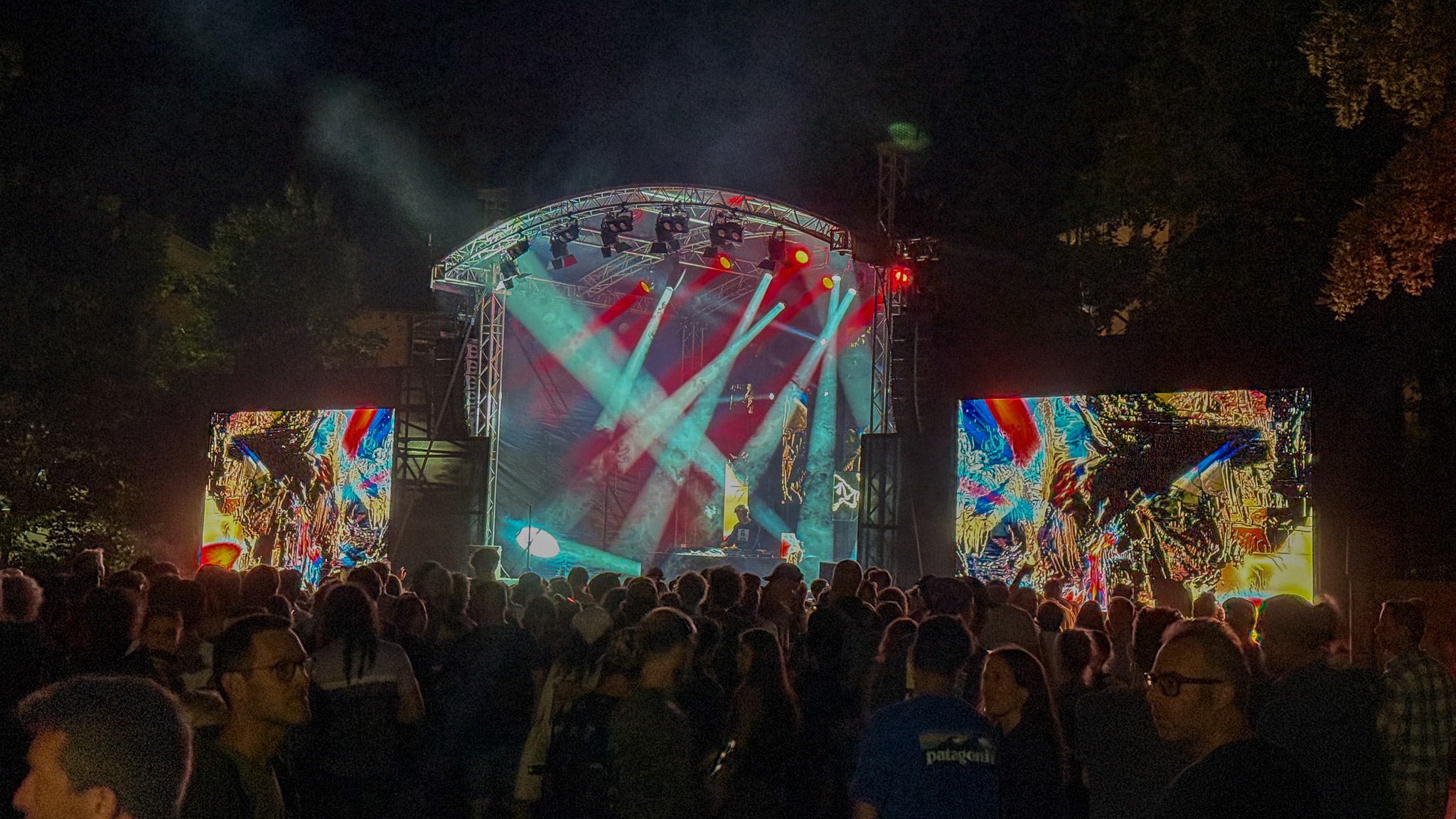
Unsurprisingly, environmental themes and climate change are major topics of discussion. That hits especially hard in a place like Chamonix. You can see the landscape shifting almost by the day, and the more people you speak to, the clearer it becomes: everyone feels the change.
One of the guides I spent time with, who had been in Chamonix for six weeks, told me that you can see changes in the glacier in just 10-14 days. And no, it’s not growing. It took us a long hike just to reach exposed ice walls tall enough to climb. Seeing it first-hand was sobering.
The grand finale of the Academy is the Bird Party, a collective rave that provides attendees with one last joyful release after days spent in the mountains. It’s chaotic, sweaty, euphoric, and shared with hundreds of like-minded souls. The perfect send-off.
Getting hands-on with the clinics
Of course, if you’re into mountaineering, the clinics are the real draw. Many people travel to Chamonix specifically for these sessions rather than the free festival at Parc Couttet. Each clinic is booked individually, and both the subjects and prices vary widely.
Sessions start at €59, such as Advanced Bouldering with Clément Lechaptois, and go all the way up to €1,159 for a four-day Alpine Climbing Introduction Course. In 2025, Arc’teryx also offered a handful of free clinics led by their athletes, designed to help aspiring mountain guides and climbers take their first steps toward a career in the mountains (see here).
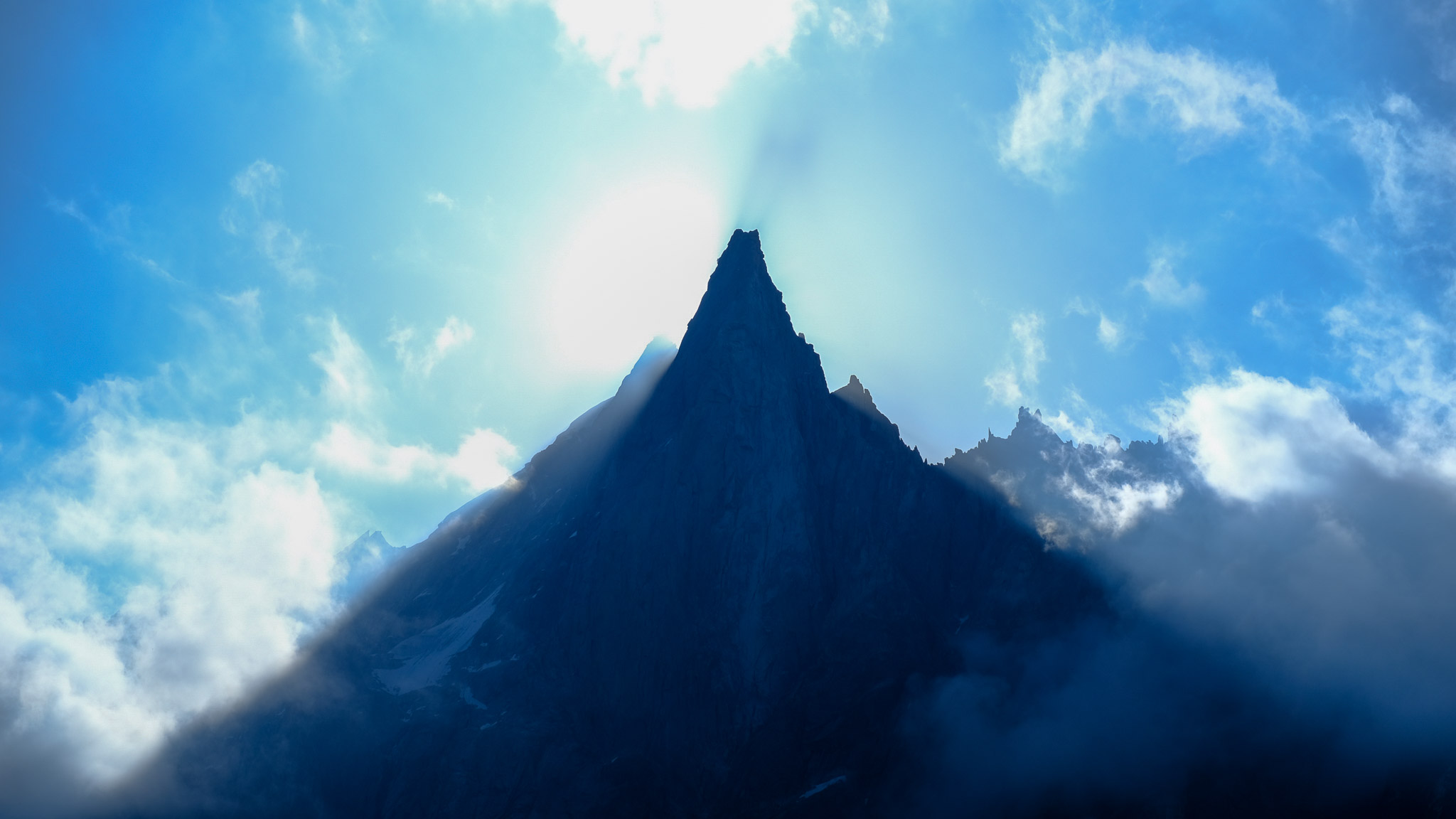
Clinic lengths range from a few hours to several days, and the required skill levels are clearly outlined on the Academy website. I found the ones I attended to be refreshingly approachable, thanks in no small part to the friendly and knowledgeable guides.
Although I was tempted by the trail running-themed clinics, I ended up choosing Mountaineering Level 2 and Intro to Ice Climbing with C.A.M.P., mainly because I couldn’t pass up a chance to get as close to Mont Blanc as possible.
Roped up on the glacier
I was initially hesitant about attending the Mountaineering Level 2 clinic. My mountain experience is limited, and my rope and knot knowledge is, frankly, patchy at best. I also didn’t want to be the guy with far less experience than everyone else.
And while I was that guy, I soon realised it didn’t really matter. The Academy is open to anyone with a passion for the mountains. If I weren’t there as a journalist, I’d still be keen to sign up for clinics to deepen my understanding of things I’m only loosely familiar with.
Thankfully, I didn’t feel out of my depth once we arrived at Aiguille du Midi, where the mountaineering clinics take place. Sitting at 3,842 metres above sea level, it’s high enough that snow never fully retreats, even at the peak of summer.
I’ve been at this altitude before, snowshoeing on Pointe Helbronner (3,462m) a few months earlier, but this time, I developed mild altitude sickness. By the sixth hour on the mountain, my throbbing headache and rising nausea were hard to ignore.
Despite that, I felt strangely at ease as we began traversing crevasses with our group of five, led by our Irish guide Naoise, still recovering from a weekend at Glastonbury.
The team was a mixed bag of mountain lovers from all over the world, from tree surgeons to recent MBE graduates, and everything in between. After catching one of the first cable cars to the summit, we covered some rope management basics before heading out onto the snow.
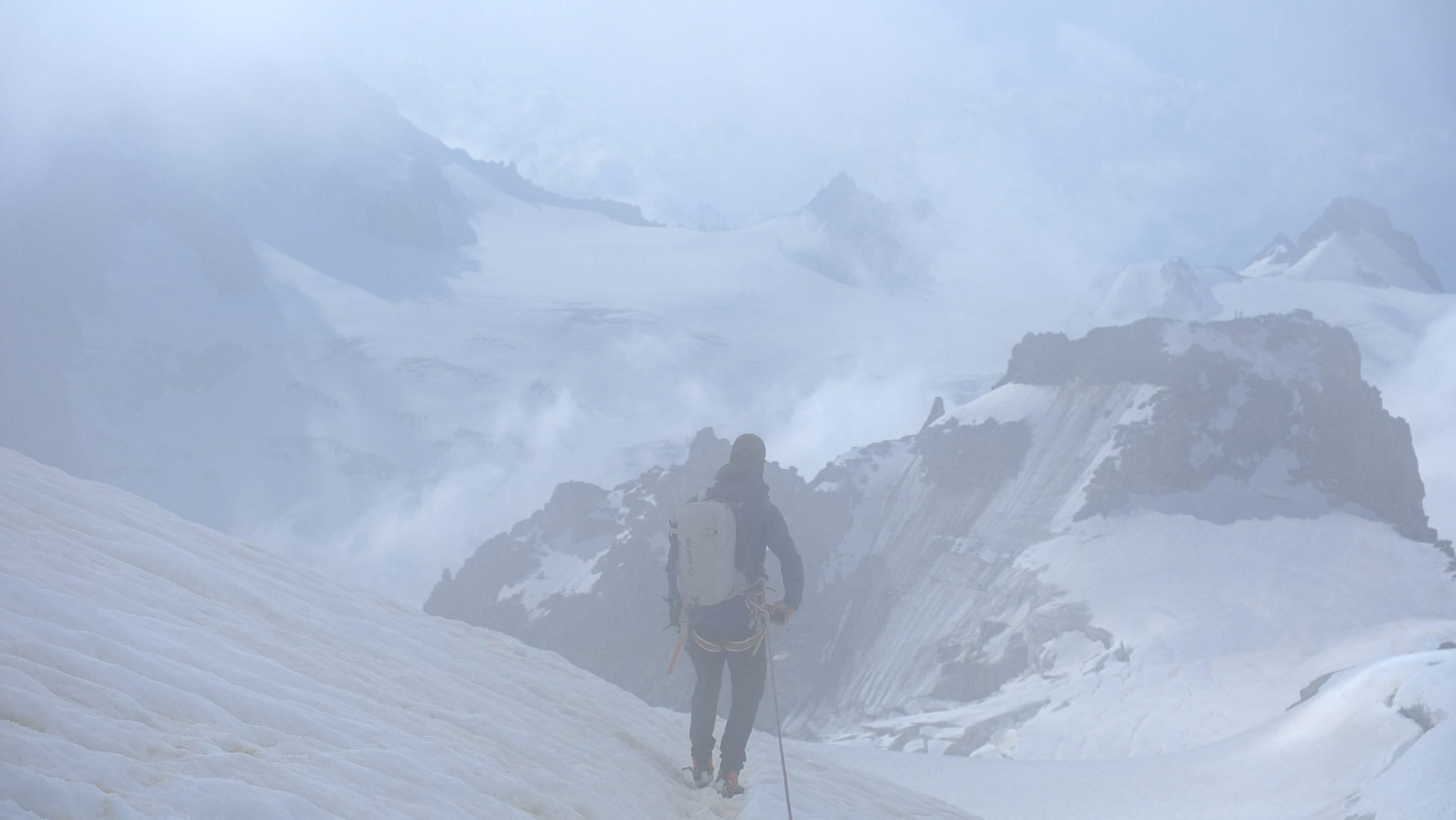
It’s usually a dramatic moment, stepping out of the tunnel and into a stunning alpine panorama. But when we arrived, everything was blanketed in thick clouds. I could barely make out the guide ten metres ahead on the rope.
After a while, we regrouped on a rock outcrop, safely off the snow, where we unroped for a quick breather and a snack. Naoise took the time, after a little nudge from me, to point out some of the surrounding peaks, which until then had been lost in the fog.
It was the right moment to do so. When you’re traversing the glacier, the rope between climbers needs to stay taut, meaning everyone is spaced about ten metres apart. It’s a lonely-but-connected experience that I absolutely love: safe, but also meditative and solitary.
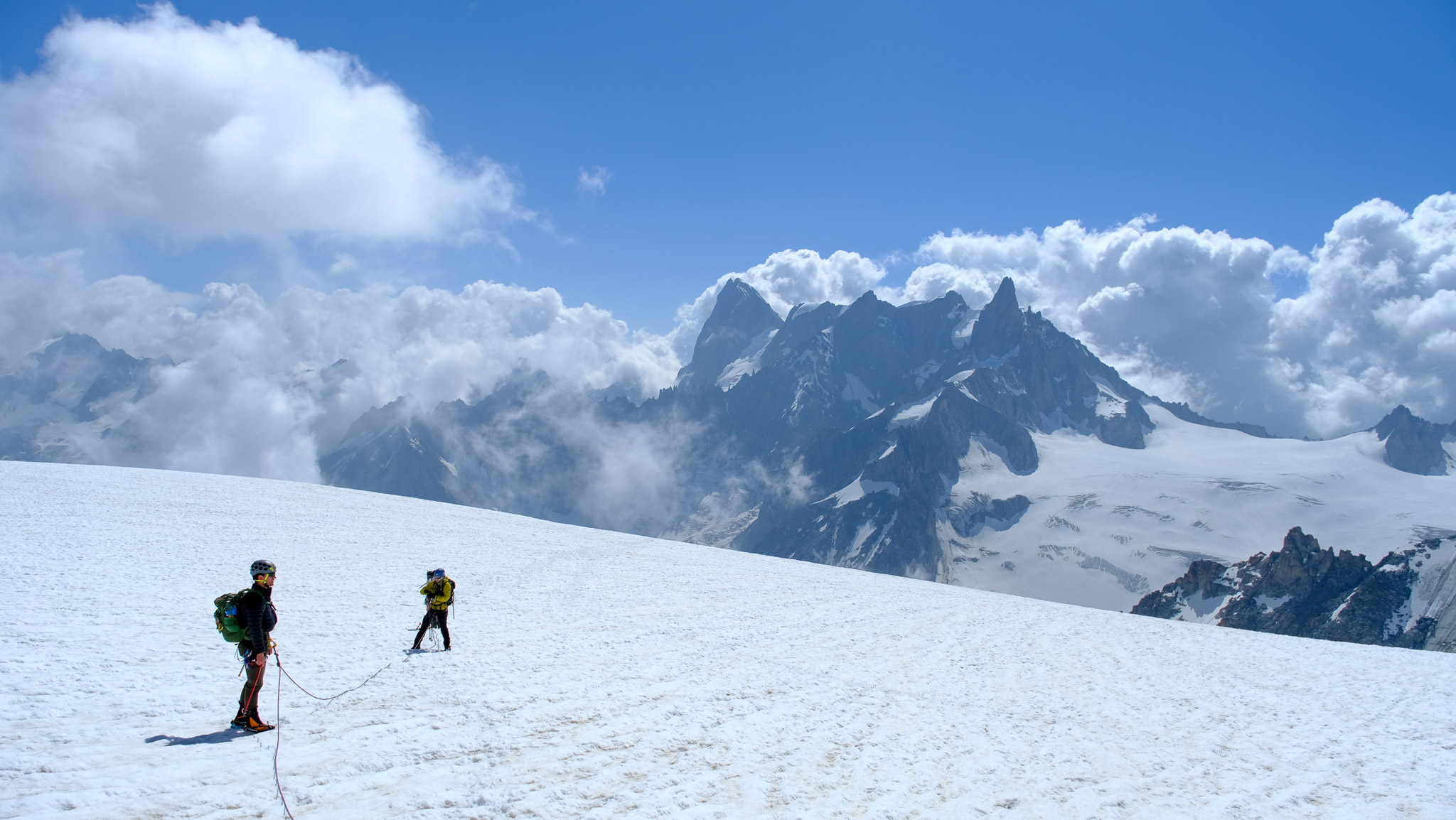
We roamed the glacier for a couple of hours, carefully stepping around crevasses and monitoring the terrain. Around midday, the clouds began to clear, and we finally got a full view of the alpine surroundings with snow-heavy peaks and ridges, some threateningly overhanging empty air.
As the sun intensified, we started shedding layers until most of us were in T-shirts. It felt oddly wrong for a setting like this. The snow had become brittle and loose, which made it harder to find solid ground for the day’s technical practice: T-anchors and ice screws.
Eventually, we found a decent spot, though I had to dig deep, nearly up to my shoulder, to set an anchor strong enough to support the weight. We practised placing ice screws and attaching slings, building anchors that could be used to rappel others down a slope if needed.
The final test of the day was self-arrest. First, we rehearsed how to position the axe in front of us while sliding. Then, one by one, we launched ourselves down the snowy slope and tried to stop with proper technique. Some people were more... enthusiastic than others, jumping high into the air, which made this otherwise serious drill a surprisingly fun group moment.
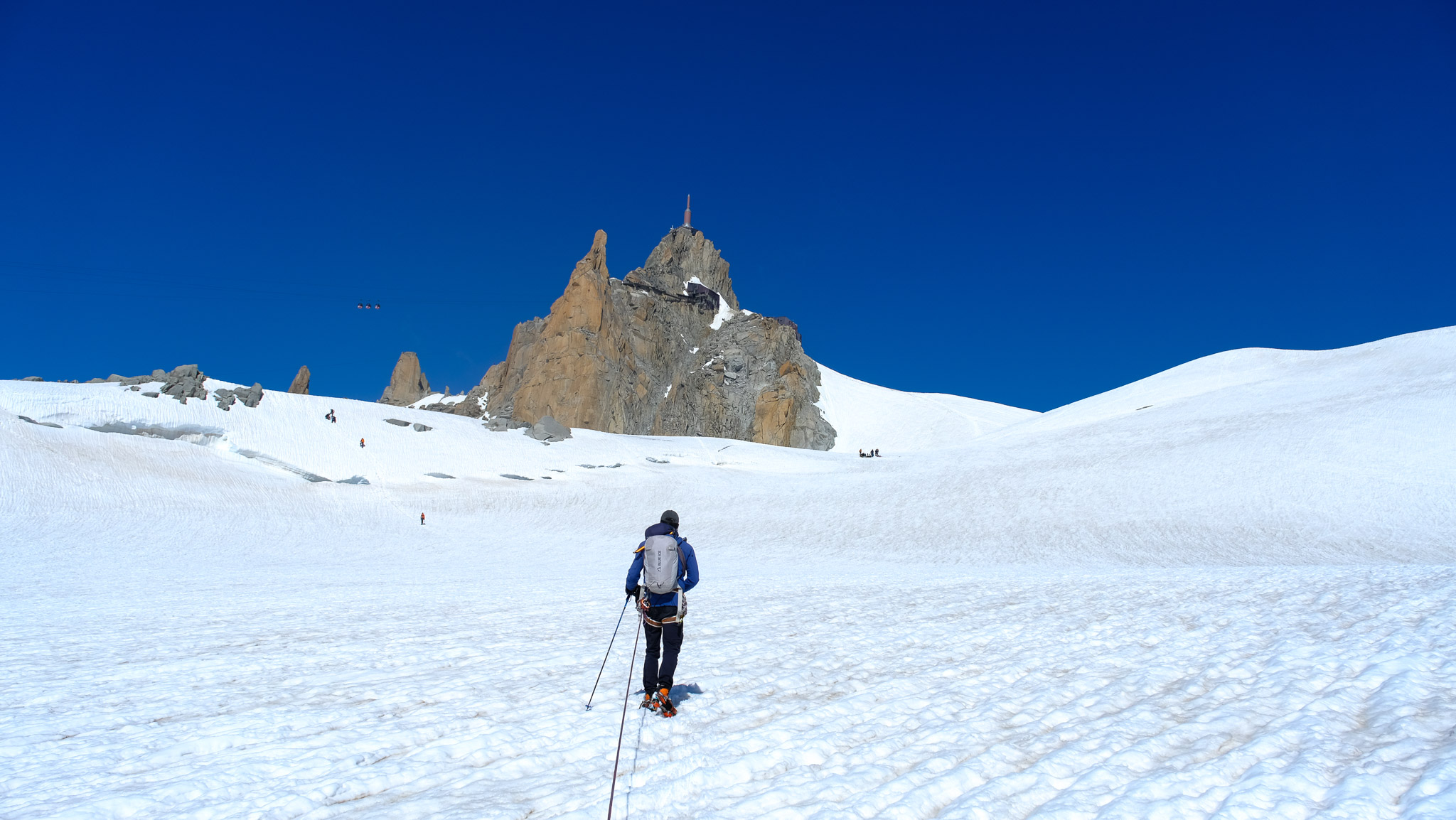
After nearly six hours, we made our way back to the cable car station along a steep ridge, sun beating down, everyone worn out. My headache was worsening, and I was more than ready to descend to the valley.
Having spent the entire morning and part of the afternoon on the mountain, it was disorienting to arrive at the station and find crowds of tourists milling around. At Aiguille du Midi, you can ride the lift in flip-flops, and plenty do. As we peeled off crampons, helmets, and harnesses, I couldn’t help but feel the weight of their stares.
The cable car down was packed with people crammed in like sardines. I asked our guide if this was typical. He nodded. “Mountaineers come up early,” he said. “Tourists come later.”
He added with a shrug, “The mountaineers don’t spend much money here,” which summed up a deeper tension. It’s the bittersweet truth of places like Chamonix: the town thrives on tourists and their wallets, but it’s the climbers, hikers, and runners who keep the spirit of the mountains alive.
Axes and overhangs
After a so-so night’s sleep, I headed back to Parc Couttet, where all clinic meet-ups take place, to join a new group of mountain folk for a day of ice climbing. It was a larger group this time, and just as international, with people from the USA, Germany, and France all eagerly gearing up for a full day out on the glacier.
Rather than taking the cable car, we boarded the Montenvers Train and then a smaller lift down to Mer de Glace. From there, we peeled away from the tourist crowds and began the trek to the ice walls, which turned out to be much further away than expected.
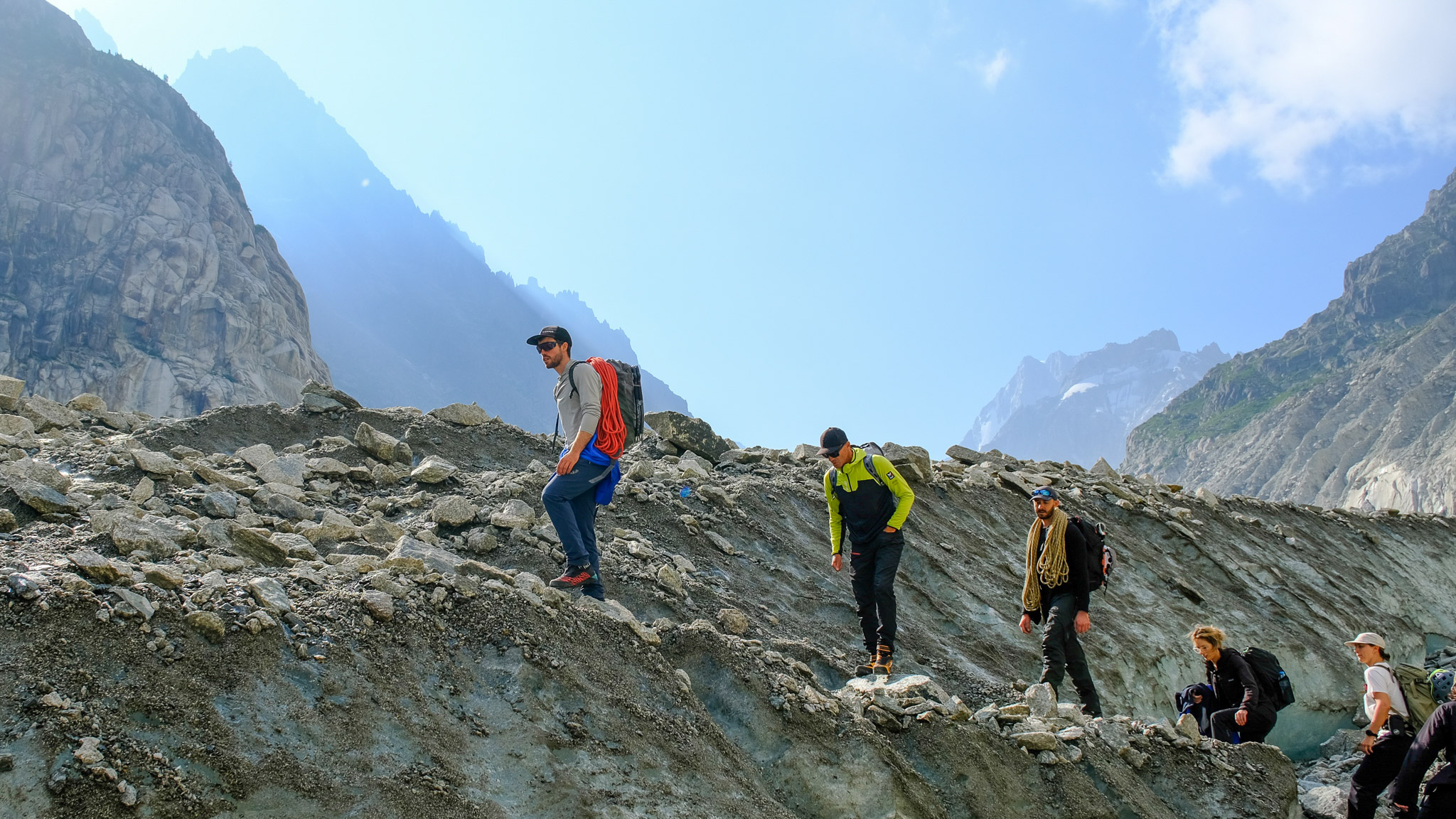
We hiked across what looked like a muddy mound in the ravine for what felt like an hour. Only later did we realise we’d been walking across the glacier the entire time, its surface hidden beneath a thick coating of rubble and dirt. About half an hour in, our guide Mikel told us to gear up. (I already had my harness strapped on since I couldn’t fit it in my bag.)
Another ten minutes or so later, and we reached the climbing site, a towering ice wall nestled between high rock faces on either side. In the distance, jagged peaks rose into the sky, giving me goosebumps. It’s not every day you see something so breathtaking just a few hours after rolling out of bed.
Mikel and another guide helped set up the ice screws, then had us practise foot placement by climbing a short section of wall without using our axes. After a few up-and-down drills, it was time for the real thing. We began descending one by one.
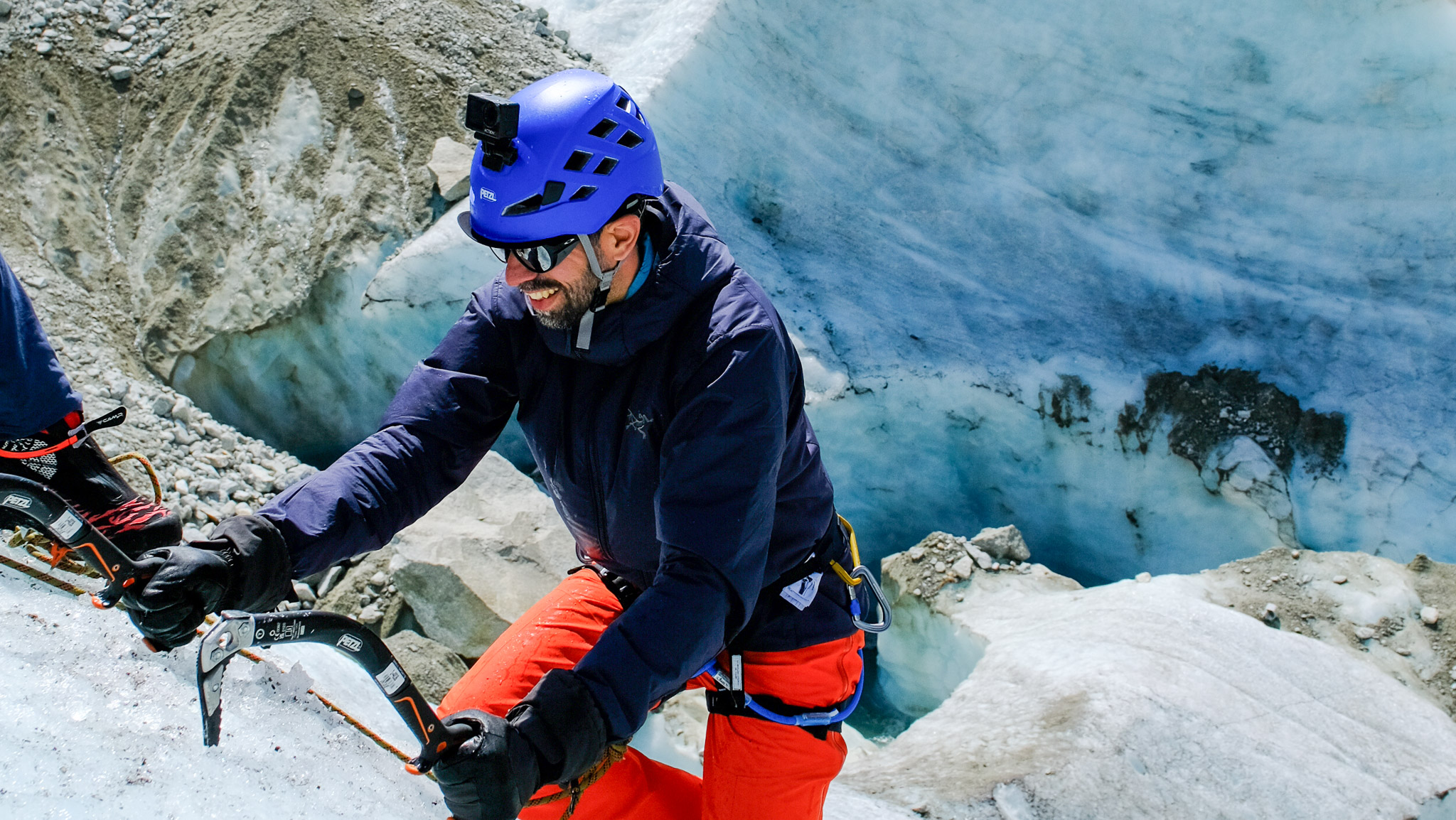
I was third or fourth to abseil down the main wall, which ended in a fast-flowing stream at the bottom. Before getting too close to the water, I slammed my axe into the ice and began my ascent. The movement was fairly easy to understand – plant the axe, take two small steps with your feet, forming a triangle shape with the axe at the top – but, as expected, it was physically tough. My muscles weren’t used to repeatedly hauling and bracing my full body weight.
About halfway up, I struggled to free my right axe from the wall. As I tugged, my body shifted with it, loosening my left axe, which then popped out completely. I lost my grip and fell. Fortunately, Mikel was sharp on the belay and caught me instantly.
Oddly, I wasn’t scared. As I dangled on the rope, I felt completely safe, and ready to go again. A couple of minutes later, I was back at the top, exhilarated. I went again soon after, just before the team relocated to the other side of the ravine to tackle a wall with a slight overhang.
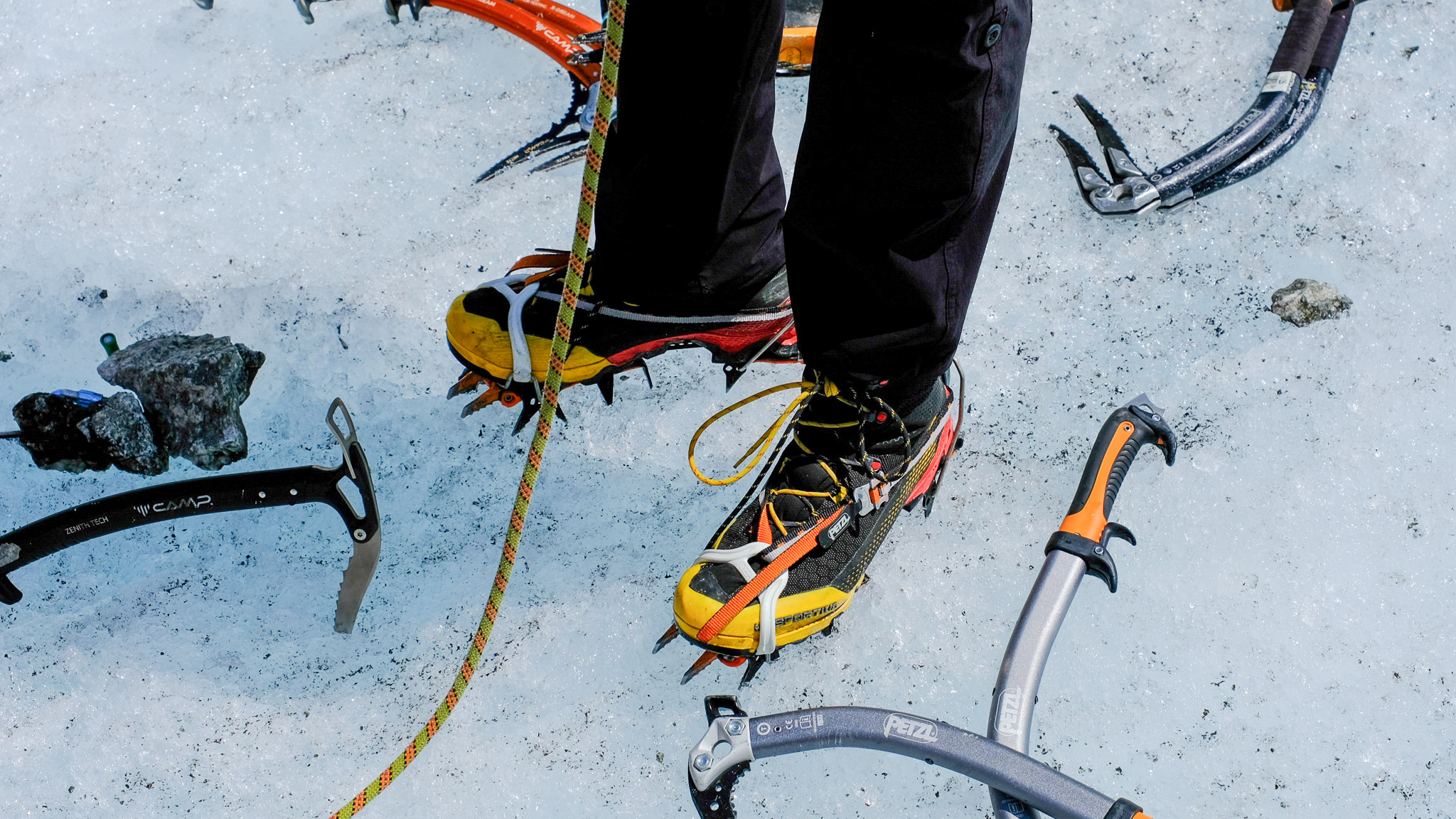
Two more lines were dropped: one slightly easier, one more advanced. As much as I’m usually up for a challenge, I chose the easier climb first. It was my third ascent of the day, and I practically flew up the wall, which gave me a welcome surge of confidence.
That’s when one of my teammates noticed I had the wrong kind of crampons on. Mine weren’t the technical variety (they lacked front points) so I’d been jamming my feet into the wall harder than everyone else just to stay in place.
Still, I decided to take on the overhang. I abseiled down and started climbing. Within two minutes, it looked like I was nearly at the lip. Just a few more metres. But suddenly, every move became harder. My arms were burning, and my crampons kept slipping off the ice, forcing me to rely even more on my upper body strength.
The issue was the overhang. My crampon points curved downwards, so they couldn’t properly grip the surface that was now tilting away from me. My legs offered almost no support. My arms were doing everything, and they weren’t up to the job.
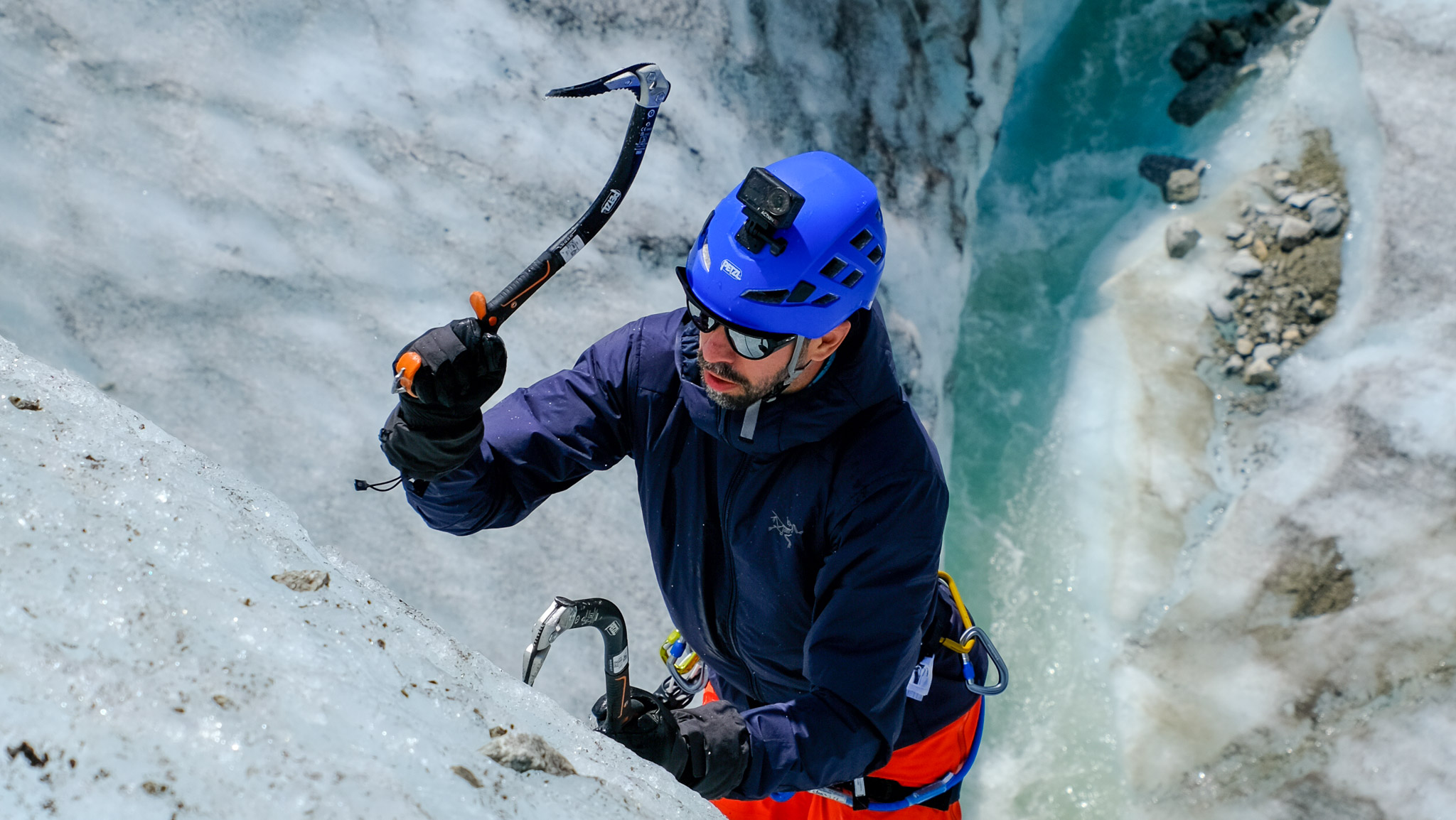
I kept slipping after every move, getting more and more exhausted. The top was within sight, but it might as well have been 100 miles away. Eventually, after several failed attempts, my belay partner poked his head over the edge and asked if I wanted a break. He couldn’t see me, but clearly felt the struggle through the rope.
I gratefully agreed. I didn’t even remove my axes from the wall, just let my arms hang and tried to reset. It looked like the overhang wasn’t quite as steep to the left, so I edged in that direction. Sure enough, with fresher arms and a better position, I was at the top in under 30 seconds.
Once everyone had finished their climbs, we packed up and began the long walk back to the lift. After 4–5 hours in the sun, the return hike felt twice as long. We made a short detour to explore the Mer de Glace ice cave, which offered a much-needed break from the heat.
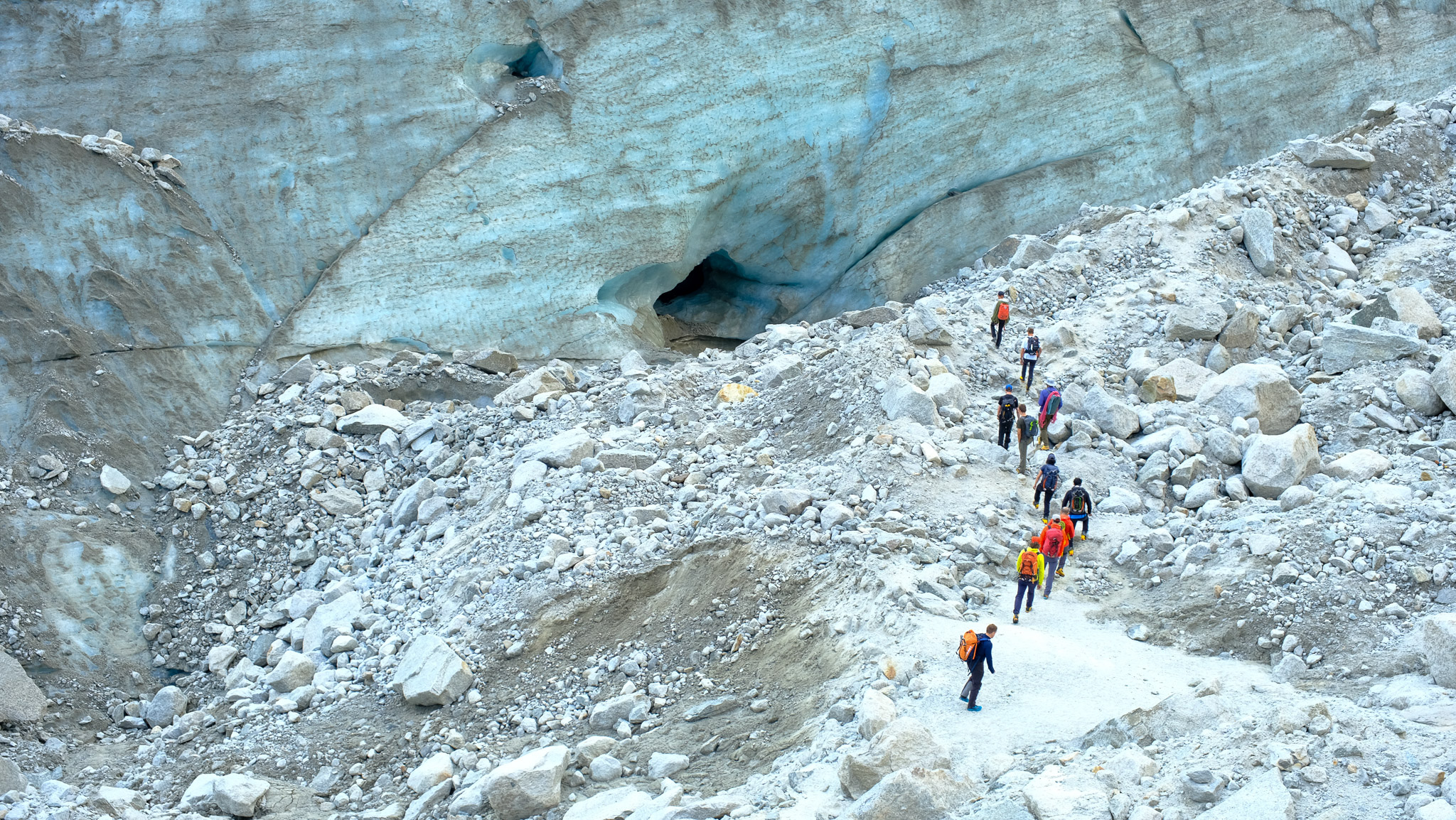
Inside was an interactive exhibition illustrating just how fast the glacier is melting. It didn’t do much for morale, but hopefully, it helps the thousands of tourists passing through grasp the severity of the climate crisis.
By this point, our group was in high spirits. We were all due back at Parc Couttet for a debrief anyway, so we decided to stop for a drink first. We shared a few laughs and stories from the day, and it was striking how quickly these people had begun to feel like friends. Shared experience has a way of fast-tracking connection.
Debriefs, drinks and new friends
The revelries weren’t over yet: the main party took place that evening. By the time I arrived back at Parc Couttet, the Joy Orbison concert was in full swing. The music was loud, the air warm, but the atmosphere was electric. Everyone was dancing, smiling, and soaking in the energy.
The only downside? The drink queue. But let’s be honest, would it even be a proper festival without a long queue for beer? I stayed for about an hour, aimlessly wandering through the crowd with a drink in hand, just enjoying the buzz.
Eventually, the fatigue from the past couple of days caught up with me, and I decided to skip the late-night Bird Party rave and head back for some well-earned rest.
The morning after: Chamonix in soft light
The next morning, I nipped out early to take some photos of quiet Chamonix. The town is beautifully still before the tourists begin to stir: calm, unhurried, almost like it’s catching its breath.
While wandering, I bumped into Bram, one of my mountaineering clinic mates from two days before. He was off to his third clinic, Crevasse Rescue. We chatted briefly and then continued on our separate ways.
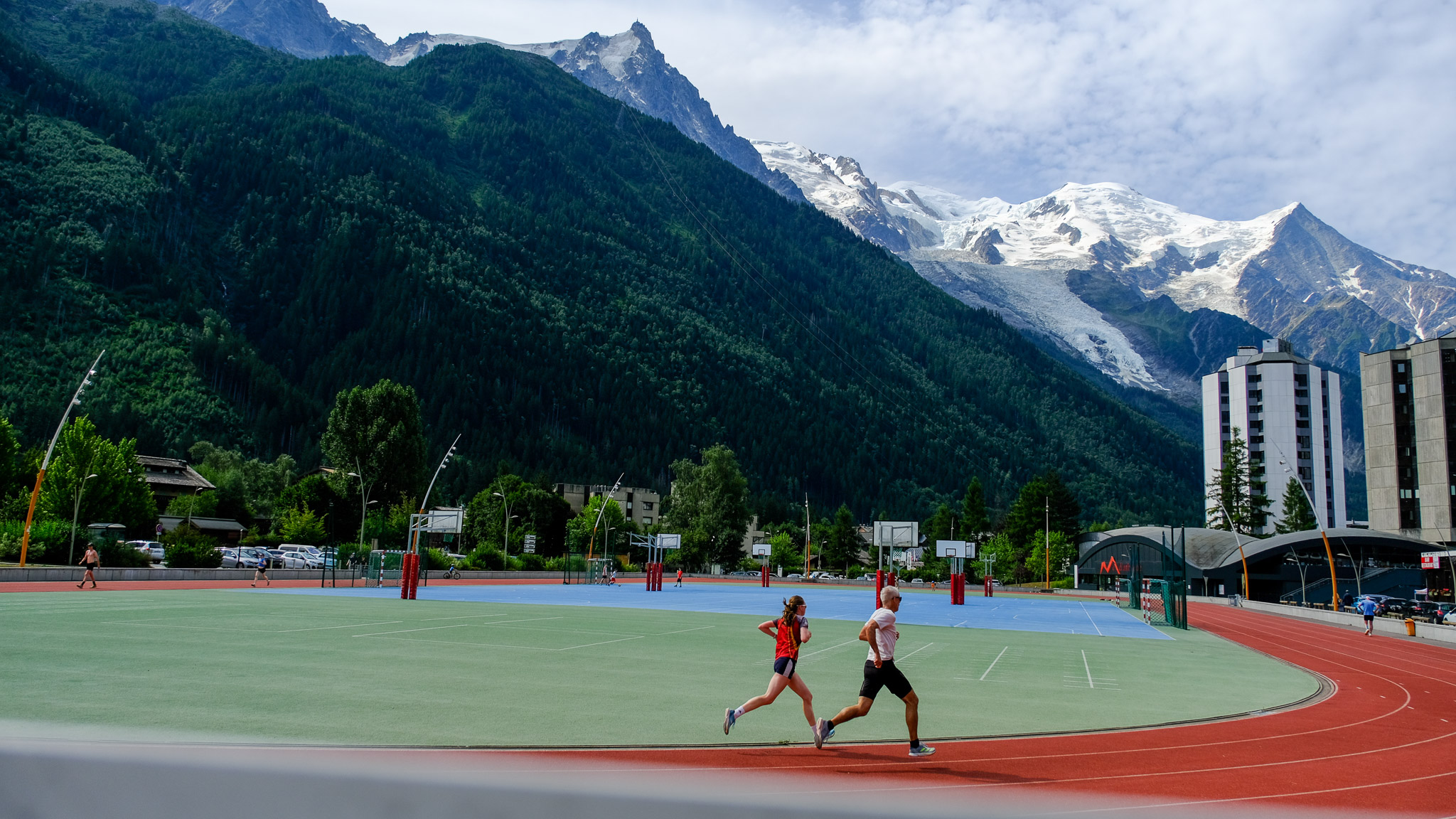
It was a small moment, but it felt like seeing an old friend. We didn’t know much about each other, really, but we’d shared something. That kind of connection lingers. Our group had even created shared photo folders, exchanging pictures we’d taken of each other and the stunning alpine scenery.
Now, writing this back home with no mountains in sight, I can’t help but miss it all. I’ve got a long-standing love affair with the Alps, and the Arc’teryx Alpine Academy distilled everything I adore about the region into one unforgettable week. It’s a brilliant blend of outdoor adventure, music, film, food, and, most importantly, community.
You can find out more about the Arc’teryx Alpine Academy here.

Matt Kollat is a journalist and content creator who works for T3.com and its magazine counterpart as an Active Editor. His areas of expertise include wearables, drones, fitness equipment, nutrition and outdoor gear. He joined T3 in 2019. His byline appears in several publications, including Techradar and Fit&Well, and more. Matt also collaborated with other content creators (e.g. Garage Gym Reviews) and judged many awards, such as the European Specialist Sports Nutrition Alliance's ESSNawards. When he isn't working out, running or cycling, you'll find him roaming the countryside and trying out new podcasting and content creation equipment.
You must confirm your public display name before commenting
Please logout and then login again, you will then be prompted to enter your display name.